
Station Name: BANGOR (Still open but included for completeness)[Source:
Les Fifoot, John Wilson & Paul Wright]
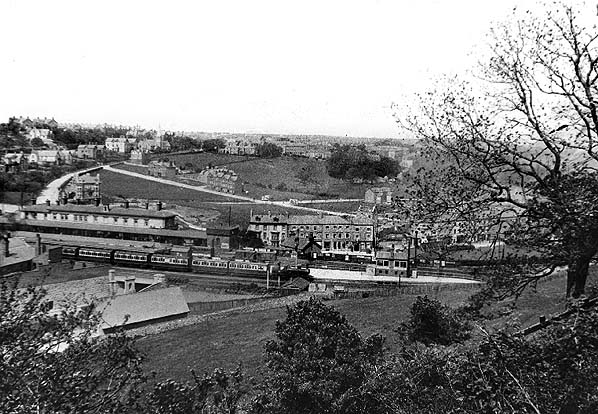 Bangor station, looking north from an elevated position in the early years of the twentieth century. At this time it had three through platforms. A signal box can be seen on the down island platform towards the right. It was later replaced with a larger box closer to the Bangor Tunnel. A bay was created near to where it stood for Bethesda branch trains.
 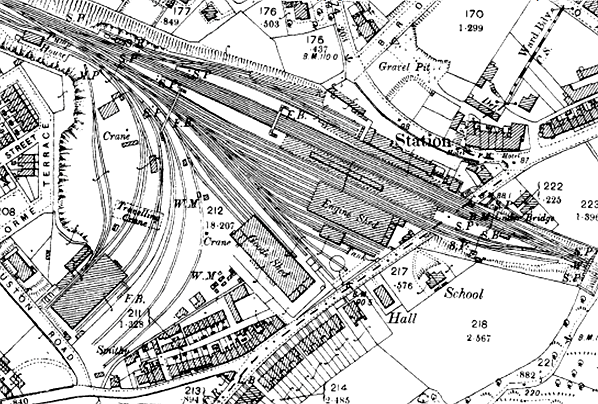
On this map from 1890 Bangor station is shown as it was following the 1884 alterations. The down platform has two faces, and the up has a bay at its western end. The original CHR building of 1848 can be seen on the up platform and was, at the time of the map, the main entrance.
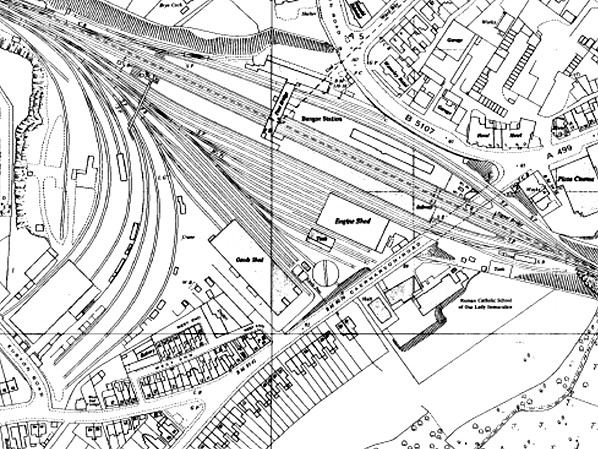 Bangor station as seen on a 1963 map. The map shows the station in the form that it took following the alterations that the LMS made in the 1920s. The up platform had been converted into an island, and the new entrance building with its booking office can be seen to its north. 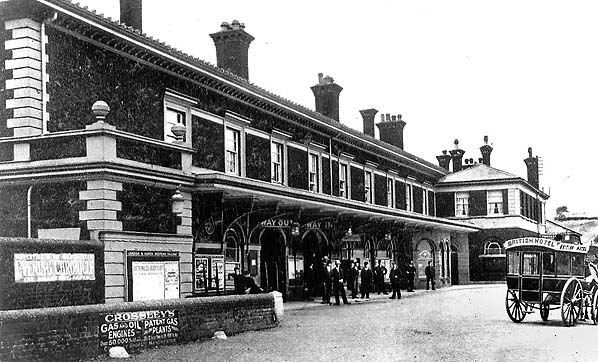
Bangor station’s original building of 1848, looking west in 1906, when it was the main entrance to the station. In the 1920s the LMS created a platform in front of the main entrance, and the building was altered to form on-platform facilities. A new entrance and booking hall was built further to the west.
Copyright photo from the John Mann collection 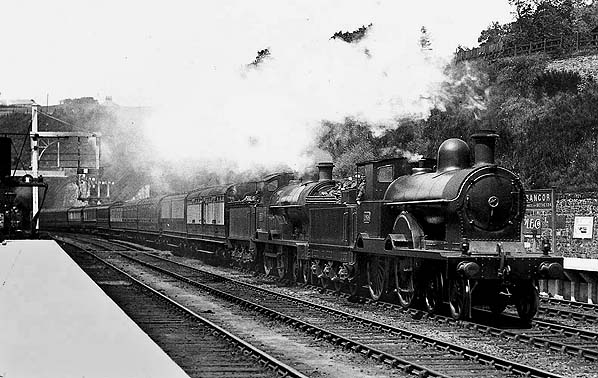 A LNWR westbound express is seen passing through Bangor on the up fast through line in 1920.
Copyright photo from the John Mann collection 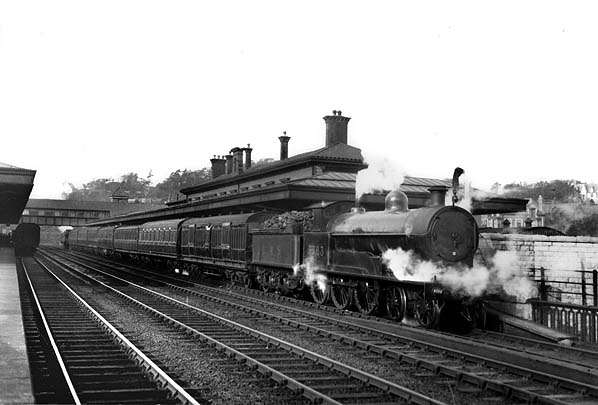 Looking north-west at Bangor station from the eastern end of platform 3 in 1932. Copyright photo from the John Alsop collection 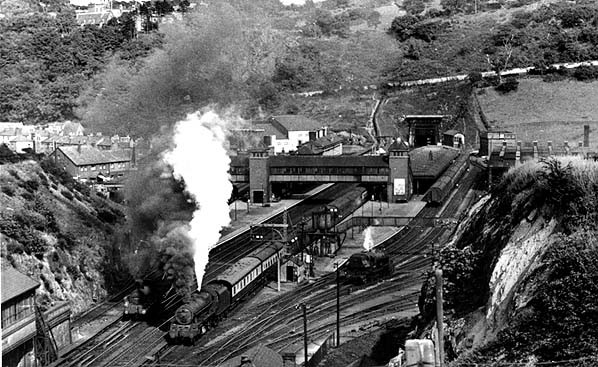 Bangor station looking east from an elevated position in 1955. The layout of the station at its western end is clearly shown. The roof of the locomotive shed can be glimpsed to the right of the station. Copyright photo from the John Alsop collection 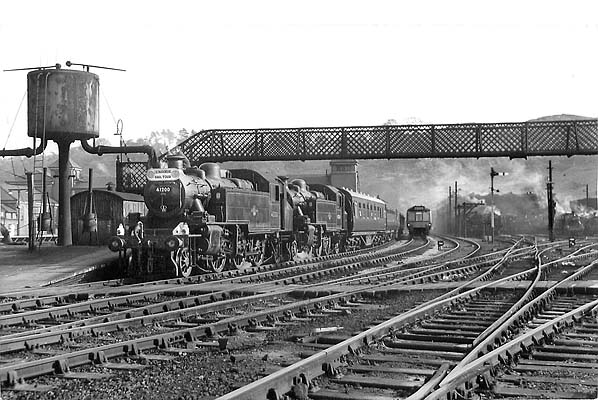 Looking east towards Bangor station from the engine shed approach lines on 20 October 1963. The Caernarvonshire Rail Tour is seen taking on water at platform 4. The footbridge seen just beyond the first locomotive provided a link from the down island platform to the goods yard. Copyright photo from the John Mann collection 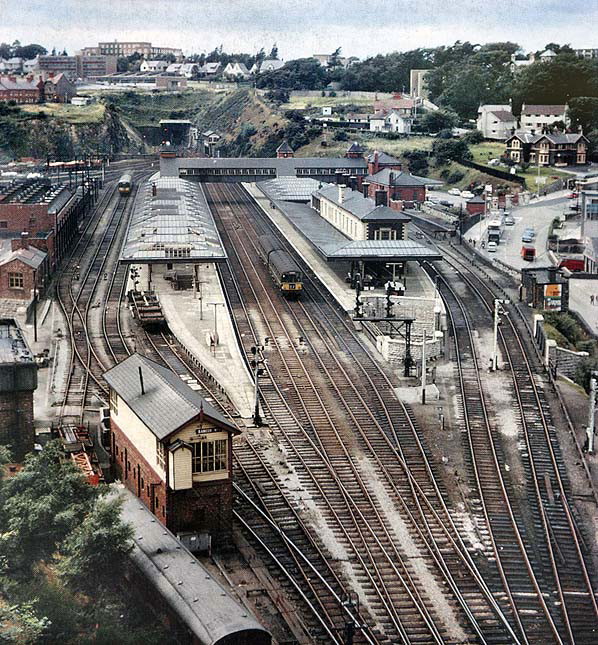 A view looking north-west at Bangor station from the high ground above the 890 yd Bangor Tunnel in August 1963. The station is seen as it was in its largest form. To the left is Bangor locomotive depot which was still open when the view was taken. The island platform immediately to the right of the shed was the down platform. It actually had three platform faces, two of them serving through lines numbered 3 (to the right) and 4 (to the left). A short bay platform can be seen in the foreground with a wagon standing adjacent to it; this was originally used by Bethesda branch push-and-pull trains. The two signal boxes that controlled the lines through Bangor can also be seen. Bangor No. 1 is to the left of the Bethesda bay and No. 2 is at the far end of the station. Photo by Chris Davies 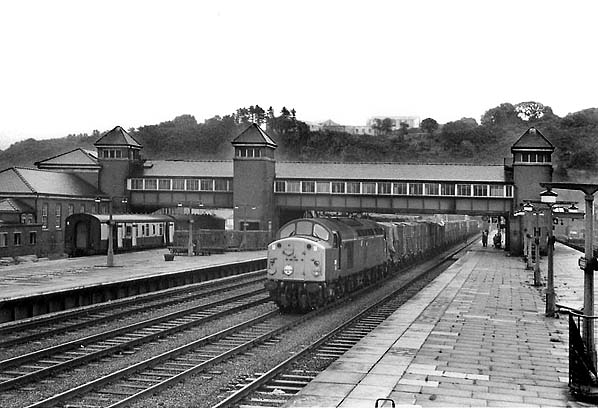 Bangor station looking south-east in 1969. A class 40 locomotive is seen passing through on the down fast through line on a mixed freight. The covered footbridge that was built in the 1920s dominates the view. Copyright photo from the John Mann collection 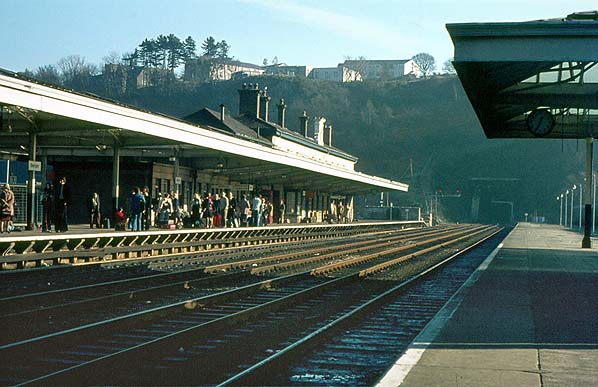 Looking south-east along platform 3 at Bangor on 2 February 1975. Although the station had lost many services over the previous fifteen years it still had its four through platforms at this time. Photo by Alan Young .jpg) Looking north-west at the 1848 station building at Bangor on 27 May 1975. At that time it was still part of the island platform that had been created by the LMS in the 1920s. The front of a Metro-Cammell DMU can just be seen standing at platform 1. Another DMU of the same class is seen standing at the middle part of platform 2. Photo by Alan Young .jpg)
Bangor station looking north-west from the up platform on 31 January 2013. This platform had originally been number 1. After the LMS altered it to an island platform in the 1920s it became number 2, number 1 being to the right. At the time of this photograph only two platforms were in use.
Photo by Paul Wright .jpg) Bangor station’s 1920s-built main entrance and booking office seen on 31 January 2013. Photo by Paul Wright
|















 Home Page
Home Page